Understanding the Differences | 9mm vs. .40 Caliber Ballistics Explained
March 06, 2023 6 min read
Deciding between 9mm vs. 40 ballistics can significantly impact your shooting experience. Understanding ballistics is crucial for selecting a firearm that meets your performance, capacity, and recoil needs.
Did you know the 9mm round has a 34% chance of stopping an aggressor with just one shot? This underscores the importance of considering stopping power alongside other factors like recoil and capacity when comparing it with the robust .40 caliber.
Both calibers offer distinct advantages. The 9mm provides reduced recoil and higher capacity, while the .40 S&W is noted for its enhanced stopping power and ballistic performance.
This blog will examine all these aspects in depth, helping you make an informed choice based on detailed analysis and direct comparisons.
Understanding Ballistics
Ballistics is the science that studies the movement, behavior, and effects of projectiles, particularly bullets, unguided bombs, rockets, or the like. It is crucial for selecting a firearm as it directly impacts the effectiveness, accuracy, and safety of shooting activities.
Types of Ballistics
- Internal Ballistics: Internal ballistics focuses on what happens inside the firearm upon firing. It includes gunpowder ignition and bullet acceleration, where variations in powder amount significantly influence muzzle velocity.
- External Ballistics: External ballistics examines the bullet's trajectory through air, influenced by wind, gravity, and air resistance. The heavier .40 S&W typically shows less deflection than the lighter 9mm.
- Terminal Ballistics: Terminal ballistics studies the projectile's effect upon hitting the target, with a primary focus on stopping power. The .40 caliber is often considered to have superior stopping power compared to 9mm.
9mm Ballistics Overview
The 9mm Luger was originally designed by Georg Luger in 1901 and quickly became the most popular handgun cartridge globally due to its effective balance of size and ballistic capability. Adopted by the German Army in 1908, it has influenced military and law enforcement decisions worldwide.
This cartridge measures 9.01 mm in diameter with a case length of 19.15 mm and typically fires a 115-gr bullet at a velocity of 1,180 ft/s, generating 355 ft⋅lbf of energy. One of its notable advantages is the relatively low recoil, about 25% less than the 40 S&W, which facilitates faster follow-up shots and better shot placement.
For those who value efficiency and organization, consider advancing your setup with a Colt 9mm Magazine Mount, designed to keep your magazines securely stored and readily accessible.
.40 Caliber Ballistics Overview
The .40 S&W cartridge was developed as a law enforcement round in 1990, born from a collaboration between Smith & Wesson and Winchester. It was designed to offer stopping power superior to the 9mm while retaining more manageable recoil than the larger .45 ACP.
This balance aimed to meet the FBI’s stringent requirements following the 1986 Miami shootout, which called for a bullet with better penetration and stopping capabilities.
The .40 caliber rapidly became popular and was adopted by numerous U.S. police departments. Its size ensures high-energy impact on targets, often surpassing 9mm in stopping power without the intense recoil of larger rounds, making it a preferred choice for duty carry and self-defense.
Comparing Terminal Ballistics
Terminal ballistics is the study of a projectile's behavior upon impact with a target. Comparing the .40 caliber and 9mm, both rounds demonstrate distinctive terminal effects.
The .40 S&W typically provides deeper penetration and a larger wound cavity. This is due to its larger diameter and higher energy transfer upon impact. In contrast, 9mm rounds tend to offer greater expansion, especially with modern hollow-point designs, which increase the likelihood of the bullet staying within the target and reducing over-penetration.
While the .40 caliber may excel in raw energy, advancements in 9mm ammunition technology have greatly enhanced its effectiveness, allowing for higher magazine capacity and reduced recoil.
9mm vs 40 S&W: Capacity Comparison
When it comes to handgun ammunition, capacity often determines tactical advantage. The 9mm and .40 S&W calibers offer different benefits, but how do their capacities stack up when the guns are of comparable size?
Here are the key comparisons:
- Capacity: In similar-sized handguns like the Glock 19 and Glock 22, the 9mm holds 15 rounds versus 12 for the .40, offering a 26% higher capacity which is preferable in multi-threat scenarios. For those utilizing 9mm handguns, consider the Stribog 9mm Magazine Mount, ideal for organizing and accessing your magazines efficiently.
- Impact on Handling: The higher capacity of 9mm magazines supports extended engagements without reloading, crucial in law enforcement and defense contexts. Conversely, the .40 S&W's lower capacity necessitates more frequent reloads despite its greater power per round.
- Strategic Flexibility: Choosing between 9mm's quantity and .40 caliber's power largely depends on personal and tactical needs. The 9mm’s ability to carry more rounds with fewer reloads offers an advantage in stressful, fast-paced situations.
Recoil and Shootability
When evaluating the differences in felt recoil between 9mm and .40 S&W handguns, shooters often report distinct experiences. This variance significantly affects user comfort and accuracy, especially in rapid-fire scenarios.
The following are the key differences:
- Felt Recoil: The .40 S&W is generally known for its snappier recoil compared to the 9mm. This is due to the .40 caliber's higher pressure and greater power factor, which results in more forceful rearward momentum against the shooter's hand.
- Impact on Shootability: The sharper recoil of the .40 caliber can affect shootability, as it might lead to increased muzzle rise and a longer time to reacquire the target. In contrast, the 9mm offers a smoother recoil profile, allowing for quicker follow-up shots.
- User Comfort and Control: The 9mm typically provides a more comfortable shooting experience for new and experienced shooters alike. The reduced recoil helps maintain better control over the firearm for those with smaller hands or less grip strength.
40 Cal vs 9mm Stopping Power
When assessing the stopping power of 9mm and .40 caliber handguns, consider their ballistic traits and ability to incapacitate threats. 9mm rounds typically meet or exceed the FBI’s 12-18 inch penetration standard.
Modern 9mm ammunition has also seen significant advancements in expansion capabilities, now comparable to the .40 S&W.
Despite this, the best 40 S&W hollow point cartridges provide about 23% greater surface area upon expansion, which could influence stopping power. However, the practical difference in stopping power remains marginal between the two calibers.
Similarly, .40 caliber rounds can create slightly larger wound channels due to their bigger diameter, the practical difference in stopping power is marginal. Both calibers offer effective self-defense capabilities, with the choice often boiling down to shooter preference.
Factors that Affect Stopping Power
The stopping power of a handgun, whether 9mm or .40 caliber, is influenced by several key factors that determine its effectiveness in a self-defense scenario. Here are the key factors:
- Bullet Design: The design of the bullet plays a critical role in stopping power. Hollow points are designed to expand on impact and create larger wound channels.
- Velocity: Higher velocity can increase a bullet's impact force, but excessive speed may compromise accuracy and control, affecting the shot's overall stopping power.
- Bullet Weight: Heavier bullets maintain momentum better, contributing to deeper penetration and potentially increasing the likelihood of reaching vital organs.
- Penetration: Adequate penetration is crucial to reach vital organs. Bullets that penetrate too little may fail to incapacitate, while over-penetration risks collateral damage.
- Shooter Accuracy: Ultimately, the effectiveness of any caliber depends on the shooter's ability to hit target areas accurately, which is critical for stopping a threat.
Elevate Your Shooting Experience With Spartan Mounts
Throughout our discussion on 9mm vs. 40 caliber ballistics, we've explored key differences in capacity, recoil, and stopping power, highlighting how each caliber offers unique benefits depending on your needs.
Whether you prioritize 9mm for its lower recoil and higher capacity or choose .40 S&W for its enhanced stopping power, the choice depends on your specific shooting style and defense requirements.
Continue to deepen your understanding of these popular calibers by exploring more detailed comparisons and educational content. For those passionate about firearms, discover the best products and insights at Spartan Mounts.
Make informed decisions to tailor your gear to your personal defense strategy and shooting preferences. For a deeper understanding, explore our detailed analysis on 9mm vs. 40 S&W.
FAQs About 9mm vs.40 Ballistics
Here are some of the most common questions when comparing 9mm vs. 40 ballistics.
Is 40 more powerful than 9mm?
Yes, the .40 S&W generally fires a larger bullet, such as 180 gr, compared to 124 gr for 9mm, creating a larger wound cavity. However, advancements in 9mm hollow point technology have significantly narrowed this gap in stopping power.
Which bullet does more damage 9mm or 45?
A .45 ACP typically creates a larger exit wound, potentially near one inch, compared to about two-thirds of an inch for 9mm. The extent of damage largely depends on whether vital organs or bones are hit.
What caliber is a 9 mm equal to?
9mm ammunition is equivalent in caliber to .357 and .380 auto. The varying names reflect marketing strategies or the geographic origins of the cartridge's development, rather than differences in size.
Does 9mm or 40 penetrate more?
Both 9mm and .40 S&W rounds meet the FBI's standard for penetration, typically ranging between 12 to 18 inches. 9mm is favored for its lower recoil, enhancing controllability and shot accuracy.
How far will a 40-caliber bullet travel?
A .40 caliber bullet can travel up to 1,500 yards from a handgun and up to 2,000 yards from a rifle. Factors like wind speed, direction, temperature, humidity, and altitude also affect its range.
Categories
Let customers speak for us
from 1932 reviews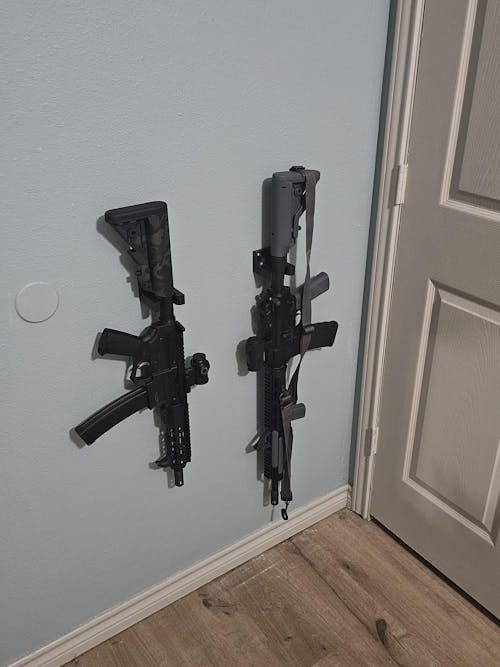
Love these. Keep it loaded, ready to go.
![Universal Rifle Mount [PAIR]](https://cdn.shopify.com/s/files/1/2627/8096/files/universal-rifle-mount-pair-446480_500x500.jpg?v=1742648211)
Very ingenious design on the rifle mounts, they close and wrap the rifle ends securely.
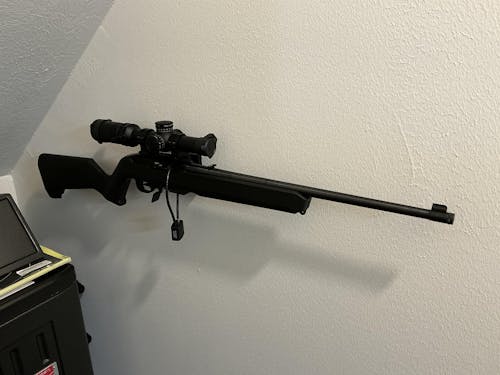
The build of the mount is very good and it fits perfectly in the 10/22. Easy to mount to the wall using the supplied hardware (I went directly into a wall stud). I leveled the mount, tightened the screws and snapped the 10/22 in place. I like that the mount is made to incorporate a cable lock. Looks great and secure!!

Like these a lot

With how I’ve mounted them for now, they are great!
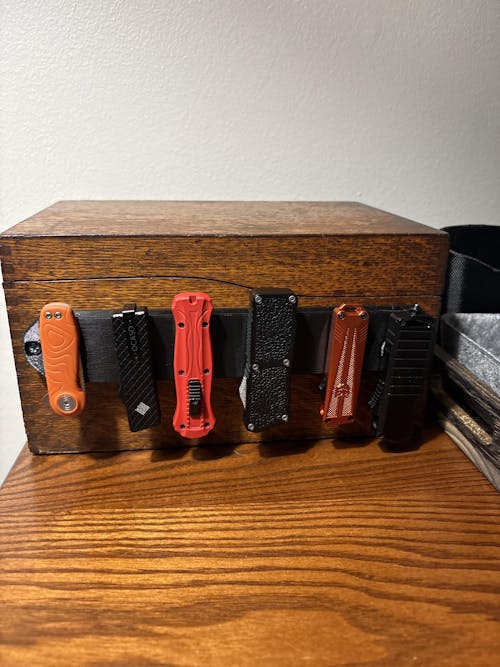
A great way to display my knives!
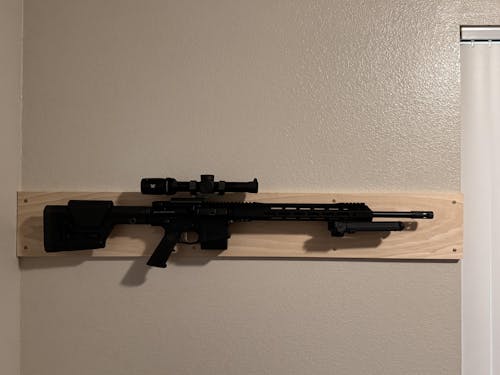
Every item is perfect…impressive QC, USA made, Great company.
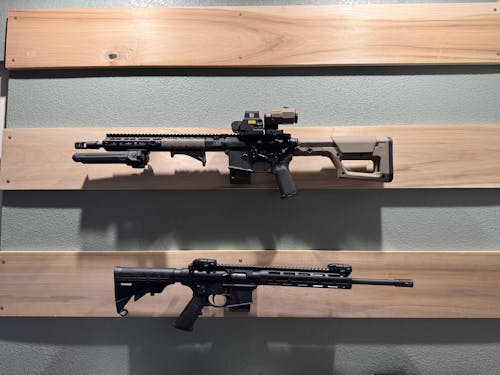
CA makes things difficult…. You guys make things easier. Works perfect!!! Will be back for more, thank you.

When I took them out of the package, they looked very strong and sturdy. I was amazed by the quality that you guys do. I mountain them right away and they looked amazing, outstanding job, but they are a little bit on the pricey side. In my opinion, they should be at least between 15 to $20 each but that's my opinion.

While creating a workbench for my office/workshop I was looking for vice blocks and this product showed up. I just got the product not too long ago and HOLY F#CKIN WOW!
First off This is very inexpensive! 29 dollars before everything is just perfect.
Second I was skeptical about the material the product was made out of however once I actually installed it on my vise and put a lower receiver on it. That did not matter as the build quality holds up to what it needs to do.
Third thing, YALL THEY GAVE ME A STICKER and a 10% coupon!
That sticker went right on my gun safe sticker wall! After browsing the site I know for a fact I'm coming back to buy more products
ONE LAST THING
If the owners are reading this can y'all please make an AR10 vice block and ar10 mag holder. Thanks!

Easy to install , rifle fit on the holder perfectly.

Perfect addition to mh tactical wall

Amazing products…. All of them

Loved everything about it. No complaints

The melt works excellent made with good quality
